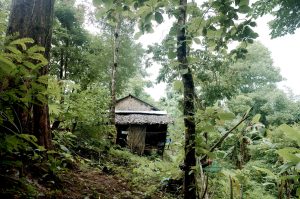Since gaining independence in 1948, Myanmar has faced persistent political crises and ethnic tensions. The most recent upheaval, the military coup of 2021, ignited widespread protests and brutal crackdowns once again, and Myanmar has descended into a civil war, with a patchwork quilt of resistance forces fighting against the military government.
Amid this chaos, a quiet, resilient life took shape and grew in the borderlands. In the jungle controlled by the Karen National Union (KNU), an armed ethnic resistance group, survival is a collective endeavor. Here, resistance soldiers, Civil Disobedience Movement activists, and internally displaced civilians have forged a new normal, a life where the lines between resistance and routine blur, and hope is reconstructed from the fragments of their shattered pasts.
Note: All names in this article have been changed to protect the privacy of the interviewees.
The Lives of Resistance Soldiers in the Borderland
After the military junta overthrew the elected government on February 1, 2021, Myanmar plunged into turmoil. A.K. and his 27 childhood friends were among the many youths who vowed to resist and fled immediately to ethnic group-controlled zones. Through close contacts, they reached out to the KNU in Karen State via Telegram. Neither of them informed their families about their destination. The farewell was abrupt but solemn, with little certainty about when they would be able to return.
The journey to the resistance camp was relatively smooth, as road inspections were not yet strict. Upon arrival, A.K. deactivated his old social media accounts for his family’s safety and contacted them sparingly through Telegram.
“I have never told them what I am doing here, but I think it gradually has become an unspoken secret inside the family,” he explained. His parents never explicitly expressed their opinion on A.K.’s involvement in the resistance force, but their silence seemed to signal a subtle approval in the local culture.
Similarly, Ko, a former policeman who had served in a small station in a southern city, left the police force and joined the Civil Disobedience Movement with three former colleagues when the coup happened. In March 2021, after hiding in the city for a month, Ko used a forged student ID to pass through multiple checkpoints unnoticed. Eventually, he reached the KNU-controlled area, where he joined the military resistance force of the All Burma Students’ Democratic Front (ABSDF).
As crackdowns intensified, so did surveillance on civilians. A.K.’s long absence made his family a target. Soldiers raided his home, and they interrogated his parents about his whereabouts. His mother deflected by saying A.K., a former tour guide, often traveled for work. Later, his father was harshly interrogated but released when no evidence was found linking A.K. to the resistance.
For Ko, although his family has not been suspected, he has not contacted them since August 2021 for their safety.
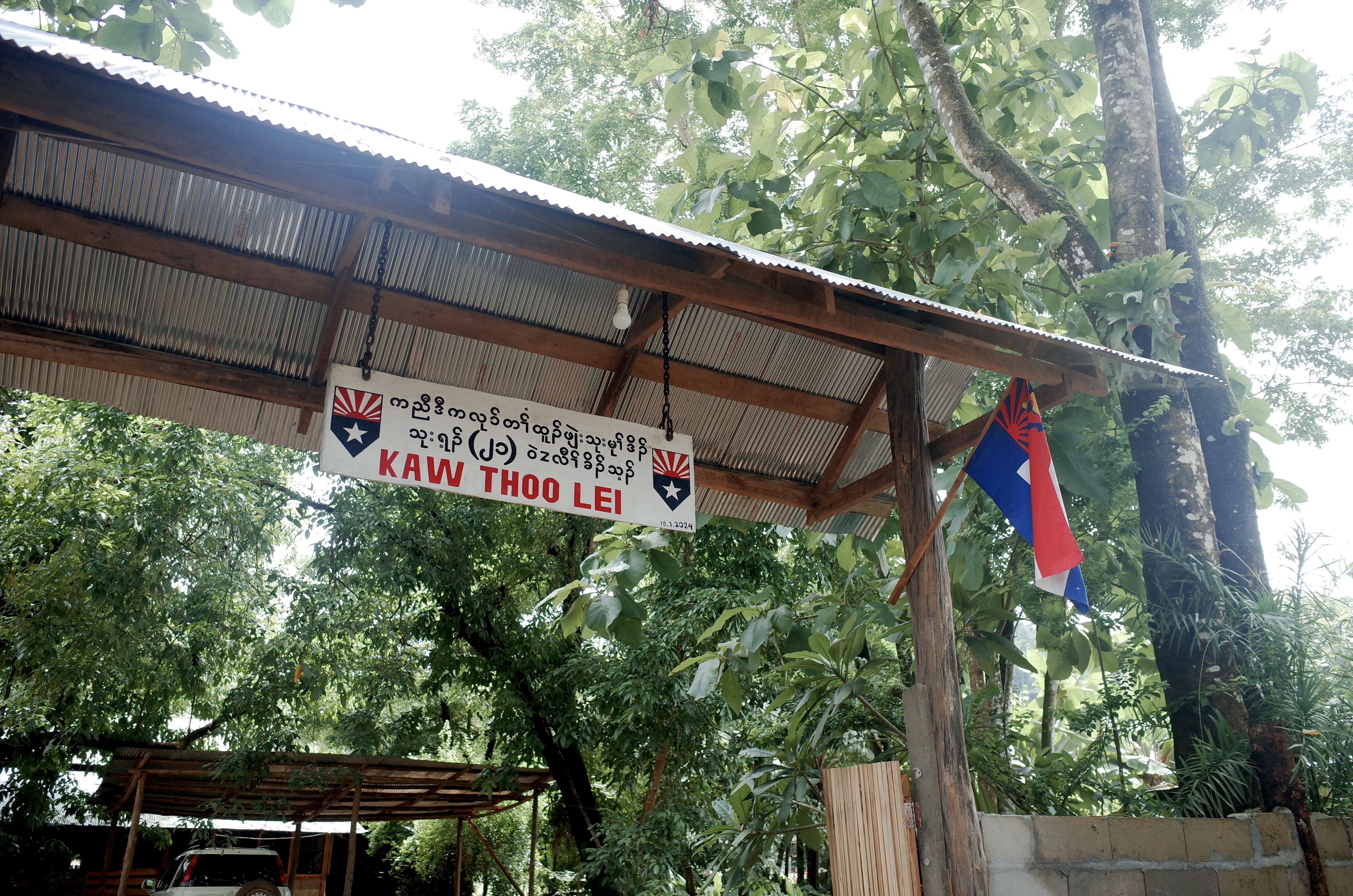
A Karen National Union (KNU) flag hangs at the entrance to the house of a village leader in Karen State. The KNU and many Karen people refer to the state as Kaw Thoo Lei, meaning “the land without evil.” Photo by Helen Li.
At the resistance camps in the jungle, participation was voluntary and unpaid. Despite the diverse backgrounds and the wide age range of the soldiers, they always tried to cheer each other up and help each other through the material scarcity. The training lasted about two months, but it took a year in general to be an experienced soldier. Gradually, the camps grew into family-like communities.
“Since leaving home in 2021, everyone in our force has never seen our families,” A.K. said. “Two, three friends’ parents passed away during this time, and so did my grandpa, but none of went back home for the funeral. My parents told me that at my grandpa’s funeral, everyday they saw three soldiers standing afar and waiting for me… Therefore, you can imagine how important these comrades in the camp mean to me. Some of the older members are like real brothers or fathers to us.”
When home feels unattainable, the resistance soldiers built a sanctuary that continues the familiar hierarchy yet warm cohesion of a family.
In this resistance-armed area, a deep, spontaneous solidarity binds the people, creating order in their disorderly lives. When not in military training or on the front lines, A.K. and other soldiers cultivate food and build shelters, prepare war supplies, and carry the wounded. They also find solace in the simple joys of football and in helping out at the nearby orphanage, where most of the orphans arrive after long, perilous journeys down the Thanlwin River at night.
In this borderland of material scarcity, survival is a collective effort, and happiness emerges from shared memories rather than individual pursuits. When the soldiers receive external donations, they give the gifts to the orphanage or the Buddhist temple in the village. The villagers repay the soldiers in kind – adults sometimes aid the logistics of the war, while children stitch uniforms with care.
Ko’s camp, like A.K.’s, embodies communal resilience. When one receives money from family afar, it is shared among all, blurring the past lines of class.
In 2023, after navigating seven hours by motorboat and three days on foot to reach the battle zone, Ko’s team endured a grueling six-month operation in the mountains while facing weapon shortages. In a recent battle in Shan State, many of A.K.’s friends were killed or captured brutally. Over time, the shifting tides of reality led many resistance soldiers to stop practicing their religions and began to trust in self-reliance and pragmatism.
As A.K., a Muslim by birth, reflected, “No superpower will guard us through this revolution. Our victories lie in our own hands, just as Myanmar should navigate its true independence when situated between two superpowers in the world.”
A.K. is convinced that the soldiers loyal to the military junta are brainwashed or lured by the junta’s claims of religious devotion. He referred to enemy soldiers as “worse than beasts,” and declared that “anyone with a bit of humanity would not have joined the governmental military and shot civilians.” This narrative serves as a common and powerful weapon within the resistances, reinforcing the dichotomy between the righteous “us” and the evil “them,” a tool for self-mobilization amid the revolution’s lingering uncertainty.
Reflecting on his past, A.K. recalls enduring a series of coups before the brief window of democracy from 2015-2020. “Back then, as now, listening to Western radios could get us arrested. Many of us never knew justice until 2015,” he said.
The five years of relative openness under Aung San Suu Kyi brought educational reforms and opportunities, but these gains were short-lived. By A.K.’s final year of high school in 2021, the junta had seized power again. “The school system was completely destroyed again. There is no space for critical thinking… even our school library has been locked down ever since.”
After high school, A.K. shortly studied to be a tour guide, since his dream has always been traveling and meeting people from all over the world. “On the first day of our class, we were told that we are all the first diplomats of the image of Burma [Myanmar], and I therefore always feel a strong responsibility to uphold that positive image of my country.”
Now fighting for the resistance force, A.K. no longer has the freedom to travel. Since his face is widely recognized and he bears pro-revolution tattoos, he cannot even travel through the military-controlled zones to other states. He only leaves the camp and the village when necessary, and he navigates the route with careful vigilance every time.
When asked about their hopes for the future, both A.K. and Ko admitted it is hard to dream individually after living collectively for so long. A.K. eventually answered briefly that he hopes for normalcy, where fundamental rights are secured. Pausing, he added, “If I may dream bigger, I hope ecotourism can flourish in my homeland. Myanmar is beautiful, diverse, and full of potential.”
A.K.’s hope is not just for the world to hear Myanmar’s struggles now but to reimagine Myanmar’s future, unveiling its serene beauty beyond the shadows of long-lasting strife.
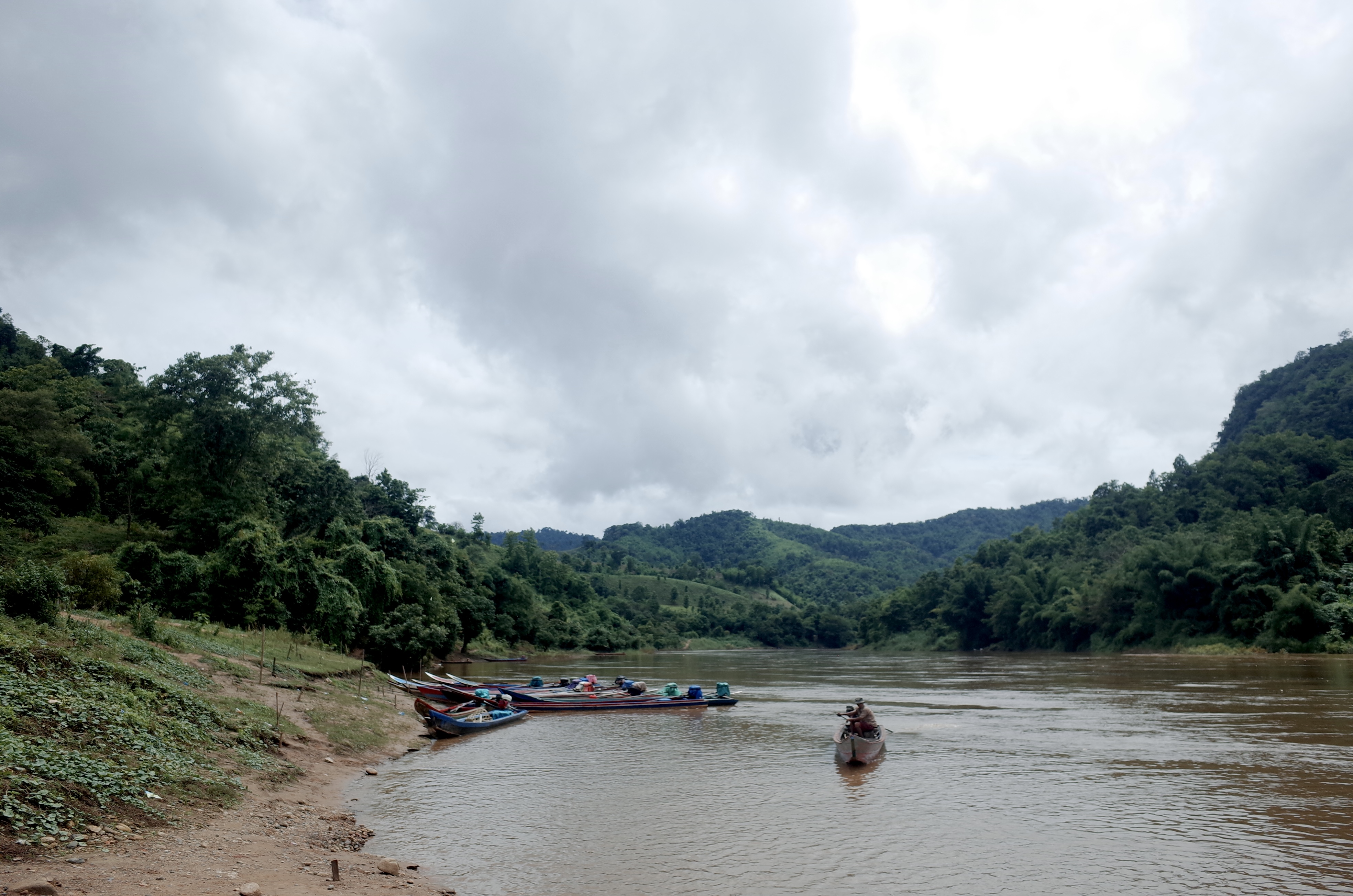
The border between northwestern Thailand and Karen State in southeastern Myanmar. Photo by Helen Li.
The Dual Realities of Checkpoints and the Reconstruction of Hope
Calm and determined, 43-year-old Thandar comes from Pathein, the heartland of Myanmar’s rice production. She was a private lawyer known for handling minor cases and inheritance disputes for the poor and vulnerable, but everything changed in the aftermath of the coup.
As the military junta amended Section 505(a) to criminalize “fake news” and “incitement” against the military, lawyers like Thandar, who dared to represent activists, became targets of the regime. After witnessing the growing injustice daily, Thandar joined the Civil Disobedience Movement and led the protests in her city.
When the crackdown intensified, Thandar fled, knowing she couldn’t stay in the city. Although she passed through multiple checkpoints controlled by the State Administration Council (SAC), as the military regime is known, she was not suspected as a solo female traveler. After a seven-hour bus journey, she finally reached an ABSDF camp near the Myanmar-Thai border, where she trained as a resistance soldier.
While Thandar managed to evade the SAC’s grasp, her son’s experience at a checkpoint was not as fortunate. On April 8, 2023, the junta raided Thandar’s family home in Pathein. Soon after, her eldest son, returning from a visit to see Thandar, was arrested at a SAC checkpoint. The police found photos on his phone of him at the ABSDF camp, despite his attempts to delete them. His interrogation was brutal. He was beaten nonstop with spiked wooden stakes and forced to kneel while the officers jumped on him. Despite the violence, the policemen couldn’t prove he was a soldier. After extorting $800 from Thandar via phone calls, they released her son.
Similarly, three of Thandar’s friends from the Civil Disobedience Movement who later joined the ABSDF were caught at the SAC checkpoints on their returns to Pathein – one was killed, another was interrogated, and the third disappeared without a trace. The weight of their fates, and the lingering uncertainty of the revolution, still hangs over Thandar every day.
Khin, a young woman studying zoology before the coup, faced a stark reality in early 2024 when Myanmar mandated a new conscription law. While the rich youths could buy their way out or flee abroad, many, like Khin, had few options. She ultimately decided to leave Yangon with her family and seek refuge in the KNU-controlled borderland. Although she had long hoped to join the resistance, fear gripped her before their departure, as stories of the merciless checkpoints echoed in her mind.
At the first SAC checkpoint, the soldiers ordered everyone out of the car. Two plainclothes policemen tried to trap Khin and her siblings, showing TikTok videos critical of the SAC, waiting for them to say something incriminating. However, sensing the danger, they remained silent.
The next checkpoint was no less daunting. Officers meticulously checked their IDs, questioned their reasons for traveling, and scoured their phones and messages for anything suspicious. As they continued, the car passed through several more checkpoints, each one managed by different forces.
The tension never lifted. For Khin, these checkpoints were a constant reminder of the fine line between escape and capture, and of the increasing normalized abnormalities in daily life. On this highly politicized and fragmented terrain, navigation – both geographical savvy and political acumen – had become an essential survival skill.
After arriving at the borderland, Khin and her family settled in the Internal Displacement Camp. Like every other family here, Khin’s family left behind all they owned, bringing only a few small valuables to start a new life. The community lives a tight-knit collective life – each adult receives 75 kilograms of rice rations per six months, and despite ongoing material and energy shortages, everyone shares grown vegetables and necessities, contributing in different ways.
Khin, like many others, volunteers full-time. She teaches Burmese at a KNU middle school, often lecturing for seven hours during the day and working late into the evening, as students sometimes come to her home with questions. After work, she needs to feed the pigs and share the chores.
Today, Thandar, with her wide connections, has become a key figure for those seeking refuge in this resistance-controlled area. She uses social media to guide others to safety. When asked about her dream, she passionately spoke about the revolution and envisioned a democratic federal government.
Khin, too, has a lofty vision: she hopes for a future where the national school system is free from heavy politicization and educational resources are more equally distributed for the rural marginalized students.
Through this collective struggle, many have postponed or abandoned their personal dreams; instead, the communal bonds have recultivated grand hopes like a national rebirth and an educational reform. These big, positive narratives help these exiled in the borderlands endure the slow march of the revolution and the repetitive, tedious daily routine.
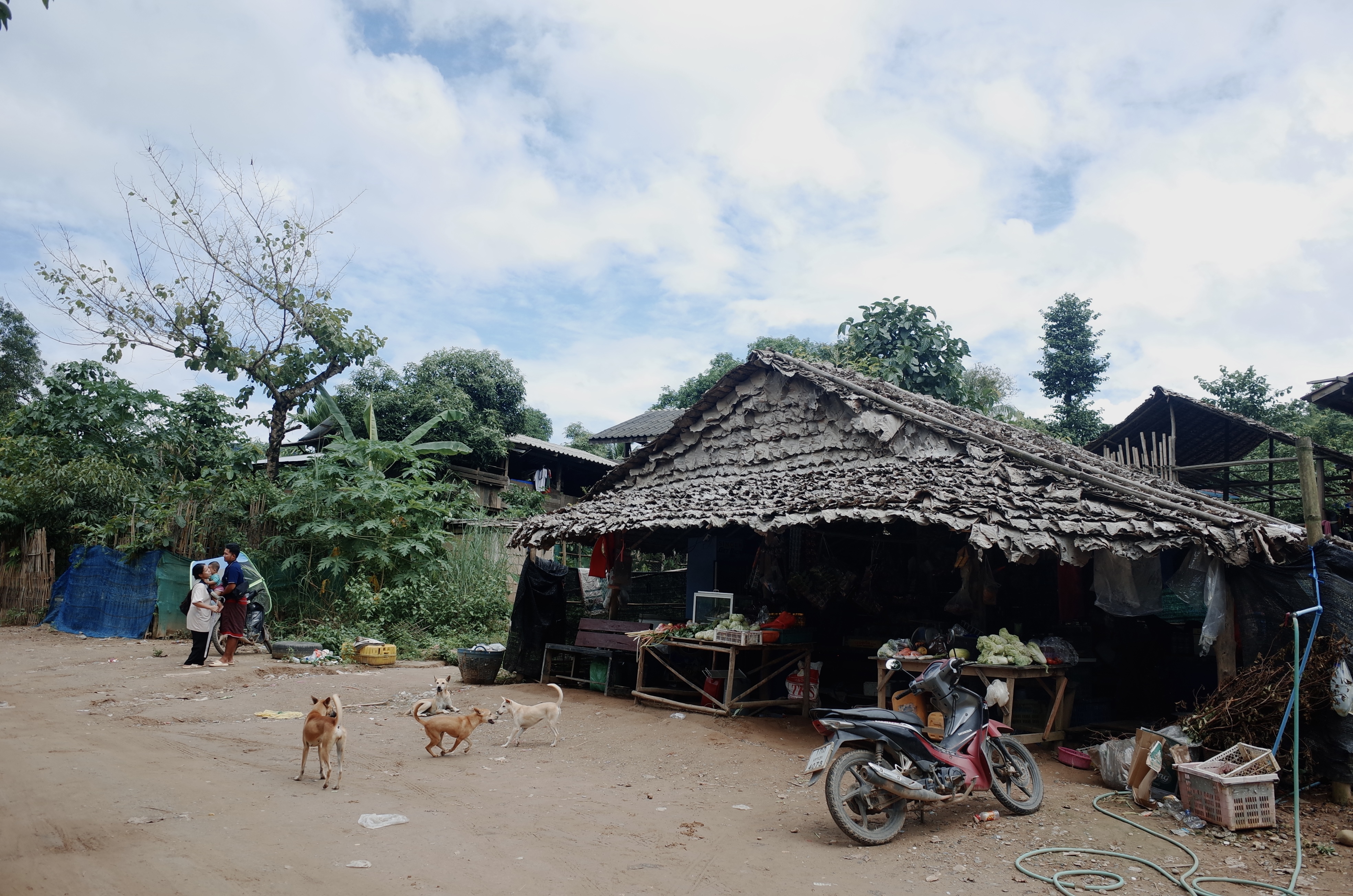
A store next to a village of IDPs (internally displaced people). This street, lined with a few stores and a family-run restaurant, is also the main local commercial area. Photo by Helen Li.
De-romanticizing Life in Resistance: Scarcity and Struggle in the Life of an Internally Displaced Family
For years, Haymar lived in a small village nestled two hours from the nearest town, Kawkareik, where she and her husband raised their three children. However, as the national conflict escalated in 2022, the sounds of gunfire became a regular intrusion, and the once-tranquil village was under siege. The battle finally grew so intense that Haymar and her small family had no choice but to flee.
The decision to leave wasn’t easy. The prospect of leaving by car was already unthinkable at the time, as the roads were dotted with SAC checkpoints, and any attempt to flee the military-controlled region was deemed an act of rebellion. Eventually, they chose the river, a treacherous route where the risk of being heard by SAC soldiers and fired upon was ever-present.
“Despite everything, I still consider my family lucky,” Haymar reflected, “ The cost of escape by boat had skyrocketed ten times to 100,000 kyats ($31) per person – far beyond what many villagers could afford. We were only one of the few in our village who could manage the cost.”
Their escape was perilous. On the way to the boat, Haymar’s family encountered SAC soldiers who demanded their destination. Quick thinking led Haymar to lie, hiding her family’s true intentions. Though they were allowed to pass, the encounter left her unnerved.
Only three boats made the crossing every night, each carrying 20 people from villages along the river. Women and children were prioritized, but space was scarce, leaving no room for food or belongings. Haymar and her small family boarded a boat in total darkness, aware that any sound in the silence could draw deadly fire from the SAC soldiers.
Navigating their new life was even more challenging than escaping. As Haymar’s family has fled to the KNU-controlled area, the SAC view them as rebels. Out of fear, Haymar has never initiated contact with her family still in military-controlled territory, worried it could lead to their arrest – or worse.
Before the exile, Haymar and her husband ran a successful furniture-making business in their village. With a van helping to deliver their goods to nearby towns, they earned a comfortable living. Now settled in the IDP camp, where opportunities are scarce, her husband works as a porter, carrying heavy loads just to survive. Haymar also sees many IDPs reduced to doing housekeeping or washing clothes for locals, or growing vegetables to sell at the market for a pittance – unable to compete with the local sellers.
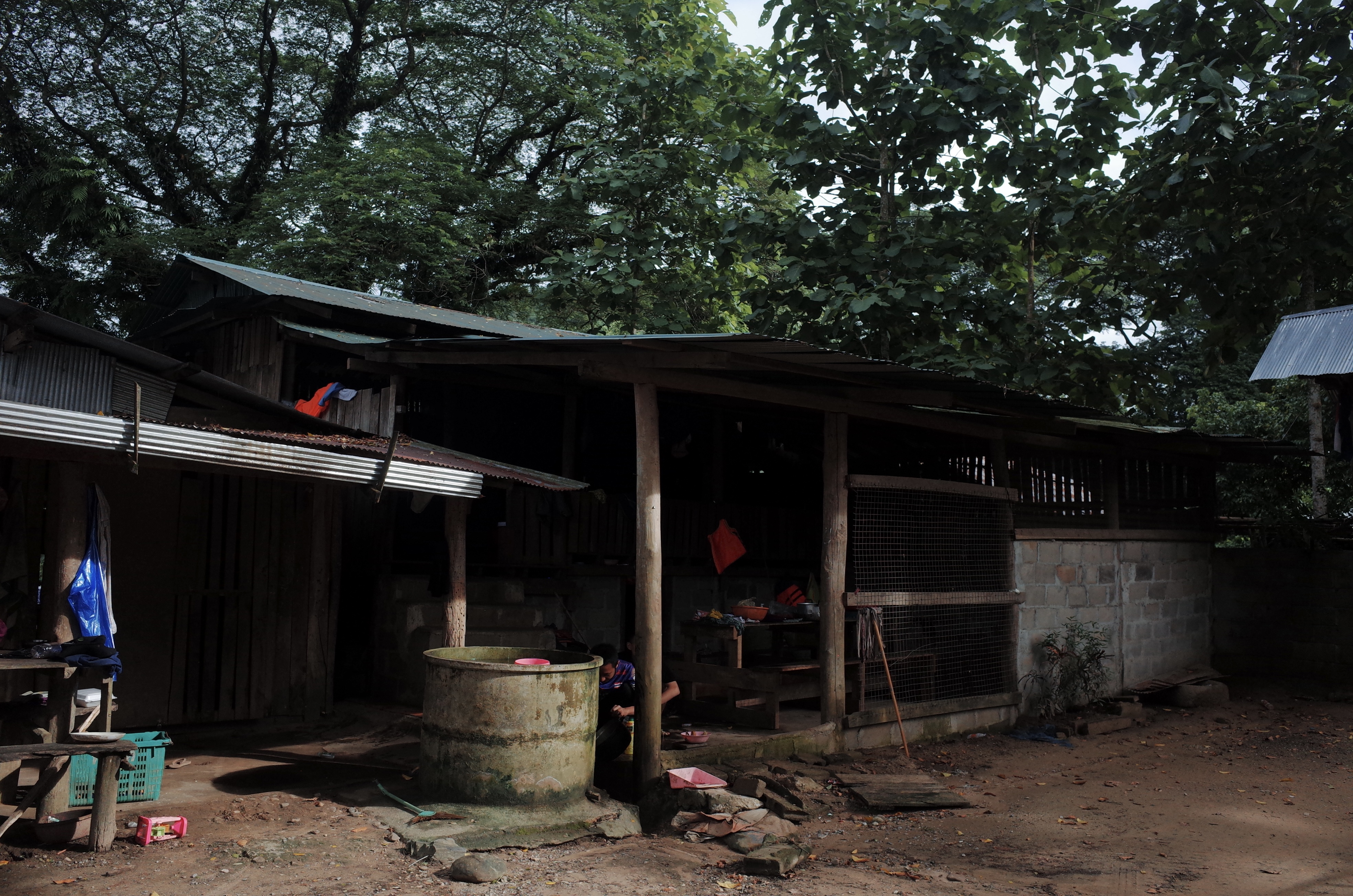
A villager’s house in the KNU-controlled jungle. Photo by Helen Li.
What concerns Haymar even more than their daily struggles is the disruption of her children’s education. After the coup, her husband, claiming “it was meaningless to attend school under the new regime,” had stopped their children from schooling, and the only primary school in their village soon emptied out as a form of civil disobedience. Now, in this borderland, despite her eldest son excelling academically in the local secondary school, Haymar is dissatisfied with the inadequate educational conditions.
For the sake of a better education, she had considered sending both of her sons back into the military-controlled area to live with their grandfather, but the new conscription law and her husband’s staunch opposition to the SAC made her wary. After deliberation, they sent their second son away temporarily to another family in the military-controlled area, hoping for better educational opportunities. For their youngest daughter, who has yet to start school, they are still navigating a path for her to receive a quality education.
Like many others in displacement, despite the present stagnation, Haymar holds onto the belief that education can bring change. “I have been trying hard, because I have been dreaming of [my children] becoming doctors one day and contributing to our impoverished community,” she said
But the challenges extend beyond education. This region faces severe medical shortages, with a lack of doctors, facilities, and medicines exposing many, especially those near conflict zones, to significant risks. In the end, these exiles find themselves engaged in dual resistance: the long-term fight against the SAC regime and the immediate struggle for essential resources and services.
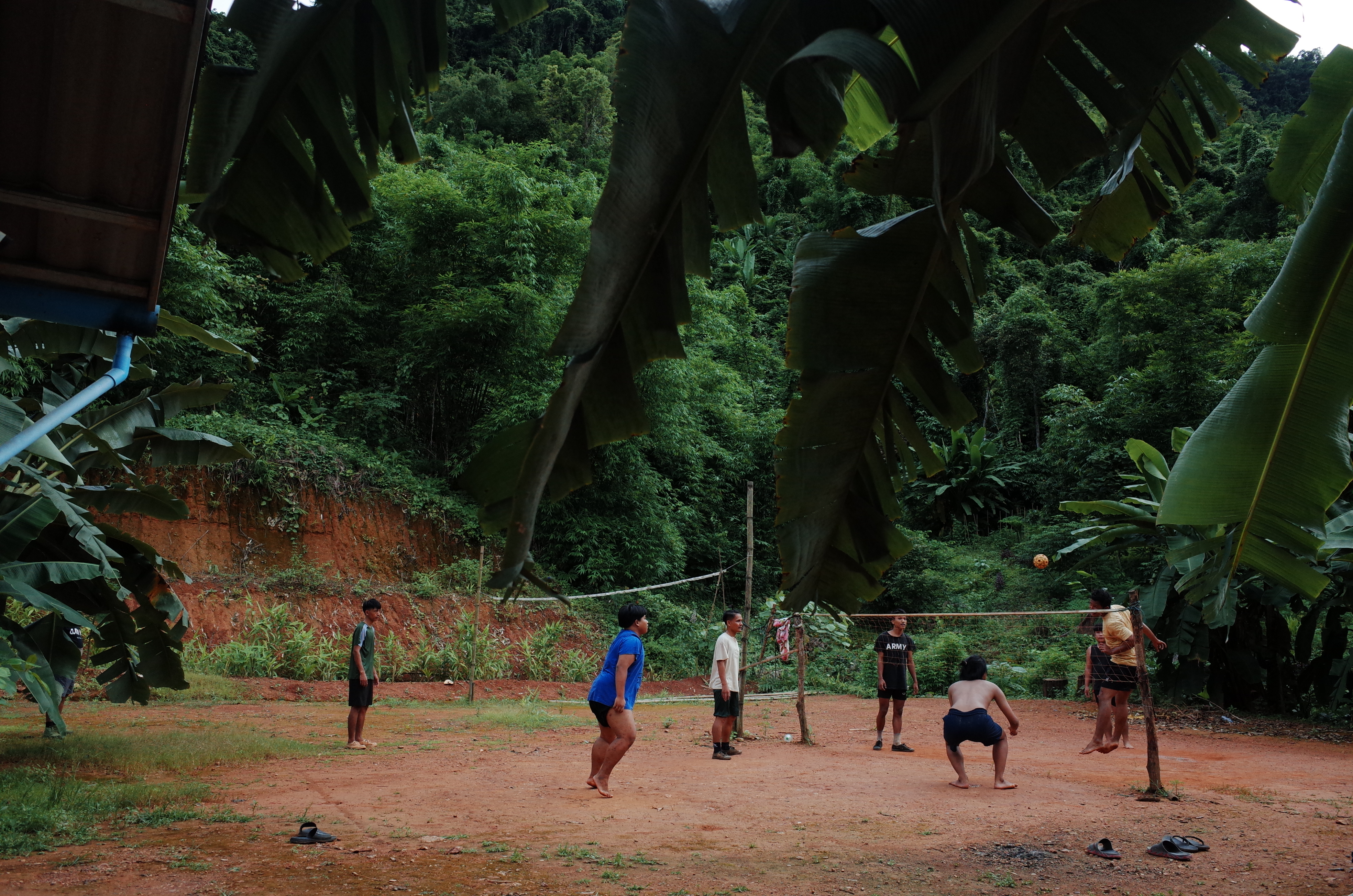
Journalist trainees playing chinlone, a traditional ball game, on the field next to a bomb shelter. This photo was taken inside a journalist training camp of a major exile-based Burmese media outlet. Photo by Helen Li.
Author’s Note
This article delves into the intertwined lives of resistance soldiers, former Civil Disobedience Movement participants, and internally displaced people within a resistance-controlled borderland in Myanmar. Each section, though centered on individual stories, converges on common themes: the collective lifestyle, the erosion of individuality, the reconstruction of hope, and the scarcity of essential resources and services. These recurring threads weave through the lived experiences of countless others who, by circumstance and choice, find themselves navigating a landscape where the extraordinary has become routine.
All interviews were conducted in a journalist training camp in the jungle, where a bomb shelter perches on a hill beside a muddy chinlone ball field. This juxtaposition captures the blurred line between extraordinary risks and ordinary life in the camp, embodying the normalization of the abnormalities in an area where resistance and survival coexist.













